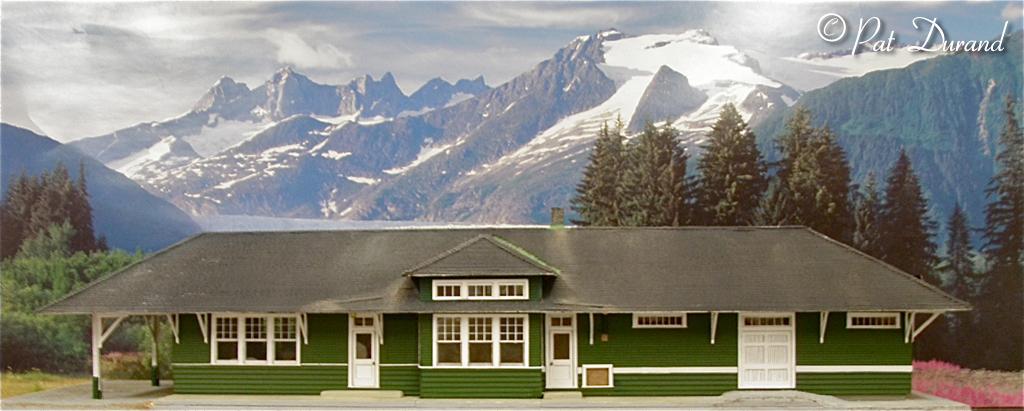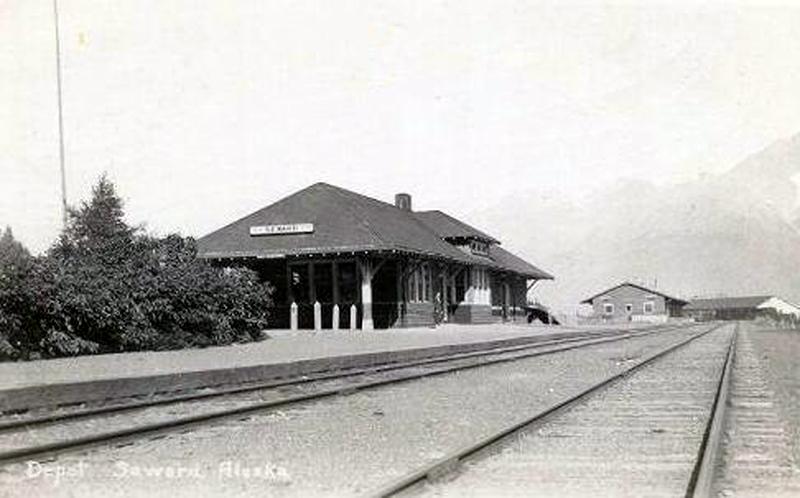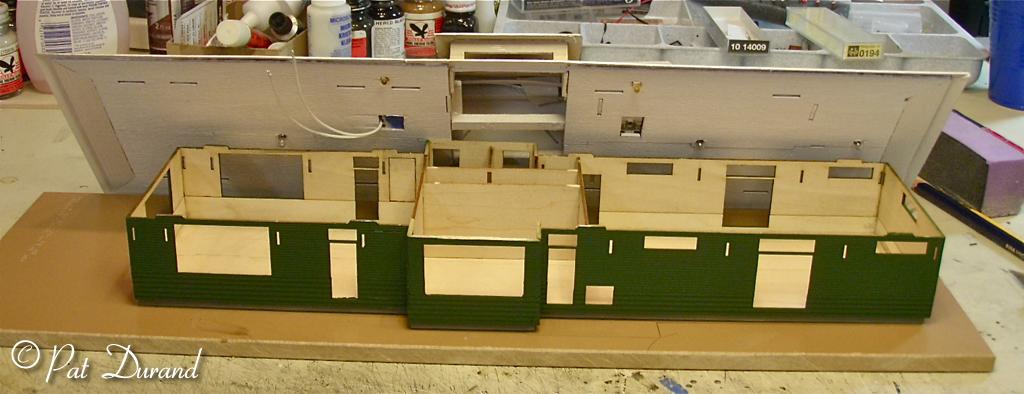

The Seward Depot building plaque shows its dates of use from 1917-1964. The building was constructed in 1917 at the base of Adams street in 1917.
Ref: THE ALASKA RAILROAD by Bernadine Prince Volume 1 page 115. "Seward Division Report 1917 An attractive passenger and freight depot 24'X90' was erected at the foot of Adams Street."

A photo on page 116 shows the Station end profile from a long distance. On page 209 there is an undated photo of the station in the same location at Adams Street.
The written records that I have access to, do not report when the Seward Station building was moved to 501 Railway Avenue. 1928 is a good guess until verified. This placed the station right at dock side so travelers arriving by ship could directly board trains waiting at the station.
During the 1948 rehabilitation the railroad changed the colors from Green and White trim to the Coffee Cream and Brown trim show in this 1950's view.

After the 1964 earthquake the depot was no longer in service and the rails were removed along the water front back to the small boat harbor.
Restoration of the building as a Historical Site saw repairs and a return to a simpler Green and White trim paint scheme. As of 2010 it is occupied by the Seward Electric Utility office and other businesses.
The American Model Builders, laser cut wood kit of the Nenana Depot is a perfect start for a model of the Seward Depot. The original Nenana Depot was actually built to the Seward plan and the second story later added.
There are only two substantial differences it the ground floor of the two buildings.
In the Passenger Waiting Room the double hung window next to each of the entrance doors does not exist. The bathroom section was extended by four feet, with the space added between the two bathroom windows. The bathroom wall extended beyond the overhead cupola toward the freight shed end under the overhanging eves. There was no full sized personnel door into the freight shed from the street side. There is sufficient extra material in the kit to allow making new wall sections or plugs for the windows and door as needed.
Over the years the roof treatment was originally wood shakes then asphalt shingles. Sheet metal was used over the eve extensions to avoid ice build up during the rehabilitation period. Shingles went all the way to the eves again during the last restoration.
By eliminating the second story from the Nenana Kit you gain most of the materials to build an Alaska Railroad Standard Section House. There is sufficient scrap material in the kit to duplicate extra rafters and sheeting to fill in the void.
There is over 80 hours work in building the Seward Depot model to this point. I have lighting in it to simulate the appearance of the current building at night.
I modified the kit into three assemblies, the base made from 1/8" masonite, first floor structure and then the roof structure. They are held together with two screws extending up from the
base. This allows it to be opened up for repair or to add interior details if ever required.

Lighting uses 16 volt DC lamps for the interior and four resistor protected LED lamps under the eves over the doors. Wires come out of the base to be connected to a 6 to 12 volt DC power source. Running on reduced power will make the lamps last for ever.
For a detailed guide to building these structures refer to my construction article on the Nenana Depot. I advise using a solvent based paint or several coats of clear spray to seal the wood after assembly. If you use water based paints you may have problems with warping if the surface is not sealed. The interior of the Seward Station has been sealed with paint and roughed in but not detailed in any way because the final "date" of the model is still undecided.

Now I have to decide which section house I am going to build with the left over parts. Thinking about the Honolulu section house, water tank and coaling stiff leg as a diorama.
I still have one AMB station house kit left and it will eventually become the Whittier Station.
Best in modeling,
Pat Durand